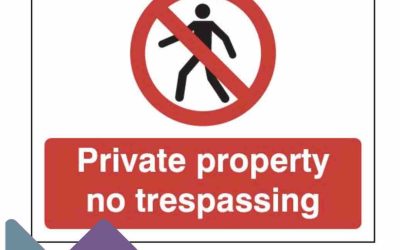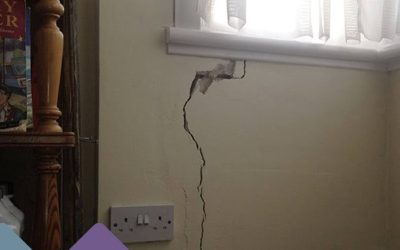In today’s Property Surveying blog post topic we are going to be looking at pre-purchase surveys and building surveying. In particular we are going to be looking at the top five typical property defects that we find our surveyors see time and time again on both RICS Homebuyer Reports and full Building Survey Pre-Purchase Surveys.
If you are planning on purchasing a property, one of the most important parts of the purchase procedure is to have an experienced RICS surveyor undertake a pre-purchase survey.
The pre-purchase survey will not only fully inform you of all of the issues that exist within the property, but in most cases it will also give you a very good understanding of the type of costs that can arise in having to rectify and remedy these defects.
Generally speaking there are two pre-purchase surveys that are notable on the market. The first is an RICS Homebuyer Report. An RICS Homebuyer Report is considered a Level 2 survey, and effectively a surveyor will go through the property condition rating the various different issues that they find ultimately giving you a fully informed understanding of the defects within that property.
The second, is a full Building Survey. A full Building Survey, also commonly referred to as a full structural survey, is the most comprehensive and detailed pre-purchase survey that an RICS surveyor can do.
Much like the Homebuyer Report, the surveyor will go room to room internally and externally locating all issues and setting those out for you in an easy to follow and comprehensive manner.
Here at Stokemont, we undertake various different pre-purchase surveys each and every week, whether it is your purpose-built flat, conversion flat, turn of the century house, 1930s house, or even your new build properties. We have seen them all.
We are going to be taking a look at some of the typical defects that we see time and time again when it comes to pre-purchase surveys so that you are fully informed of what exactly these are and what to expect.
Roof Lichen
Roof lichen is one of the by far most common defects that our surveyors see during their pre-purchase surveys.
It is effectively an air borne fungus which originates from perimeter trees, vegetation and bushes.
It will settle on both the roof and surface of the property at which point it will effectively grow and spore resulting in fruiting bodies that are visible to the eye.
Lichen has the effect of absorbing water which in the colder months will then freeze. This freezing will effectively create a freeze-thaw effect to the surface of the roof tile and result in the delamination and reduction of the roof’s longevity of life.
Defective Pointing
Defective pointing is again an incredibly common issue and defect that our surveyors here at Stokemont see on a daily basis.
Defective pointing arises when the brickwork on the front, flank or rear elevation of the property suffers some form of minor movement. It is worth noting that all properties will naturally move on a daily basis, and will adjust to the soil conditions. This is commonly known as thermal movement.
It is nothing to be concerned of, as all properties do it, however it can and will often result in the pointing to the property popping out or becoming loose.
Once pointing is loose, if it is left unfixed it is likely that rainwater will penetrate behind the pointing and will ultimately end up penetrating the internal parts of the property.
This is one of the most typical causes of penetrating damp.
Blocked Drains
Blocked drains are another incredibly common issue that our surveyors at Stokemont see on a daily basis.
Drains are one of the most important parts of the property and will not only draw rainwater away from the property, however will also draw foul and waste.
Drains can easily be neglected, or over-used through the use of baby wipes or other form of thicker matter, which can easily block and clog the drains.
A common occurrence here at Stokemont is for our pre-purchase survey RICS surveyors to lift manhole covers and inspect drainage gullies.
Here we can often find blockages, ruptured drains, or even signs of tree roots.
All of these are indicative that the drains are likely to require jetting, or worst case scenario re-lining.
Internal Cracking
Internal cracking is another incredibly common, if not the most common, issue that we see here at Stokemont during our pre-purchase surveys.
As previously set out, all properties will move on a daily basis and in many cases this movement can result in minor internal cracking to the walls and ceilings.
Nine times out of ten, this is not a major issue of concern, and is just simply a matter of rectifying and remedying through normal planned maintenance before decoration.
However, it is worth noting that cracks of this nature can also be indicative of more severe structural issues to the property.
We would therefore always advise that if you spot any cracks that you take the appropriate advice of an RICS surveyor.
Bridged DPCs
A DPC, abbreviated for damp proof course, is effectively the property’s defence system against penetrating damp.
Usually, there will be some form of impervious layer installed just above the base of the ground and to the perimeter of the external walls.
On older properties this can be an upturned slate tile, on newer properties this will be an impervious plastic, or polythene, sheet.
The purpose of this installation is to ensure that damp and rainwater does not splash or penetrate above that level, thereby keeping the internal property dry and free from any water ingress.
Commonly, as home owners renovate and upgrade their properties, these can include insulating such as the raising of the ground levels, installation of paving, or steps, flower beds, or other large obstacles located against or near the external facades.
While these have an excellent aesthetic to the garden, they also can allow for damp to penetrate above the damp proof course which can often result in internal damp and amber or red readings on a surveyor’s Protimeter.
A Protimeter, is also commonly referred to as a damp meter and will detect any internal damp within the property.
Pre-purchase surveys are often looked at as an unnecessary cost by purchasers, here at Stokemont we would advise that you take the stance of looking at the pre-purchase survey as an investment against future making good costs.
In many cases, we also advise that our clients attempt to re-negotiate the overall cost of the purchase post survey and post our advice.
In many cases the defects that we note can range from a couple of thousand, up to tens of thousands.
With the average pre-purchase survey here at Stokemont costing circa £700-£1,000 plus VAT, it is easy to see how the survey will pay for itself many times over, not to mention save you significant stress and financial hardship in the near future.
If you would like to discuss your pre-purchase survey requirements with our team of experienced RICS surveyors, give us a call today and we will be more than happy to assist and advise you.




